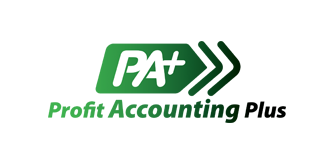More and more businesses are moving toward going totally paperless. And aside from the slight learning curve and minor upfront investment in time and money, there’s practically no downside to running a paperless business. A paperless business enables you to:
- Reduce the need for physical storage space and containers
- Protect important information and data from physical damage by events like a fire or flood
- Expedite operations and increase efficiency
- Provide customers and clients with better service
Three Technologies to Help You Go Paperless
Making the switch from filing cabinets to cloud-based storage can be daunting. Here are three leading technologies you should consider if you want to reap the benefits of a paperless business.
1. Paperless billing
Whether your business is paying its own bills or sending invoices to customers and clients, going the paperless route is a great idea. You probably have a number of bills you pay each month. Don’t let writing checks and licking envelopes take up an entire Saturday. Instead, opt for online bill pay. Usually, you can set it up to pay your regular bills for you each month. For example, you can automatically pay your business insurance online, as well as other routine expenses like office utility bills and workers’ compensation for your employees.
Likewise, providing the convenience of online bill payment to your customers is something they’ll probably really appreciate. For example, many tech-savvy barbershops now have online scheduling options that allow customers to pay ahead of their appointment. This helps speed up their process, getting customers in and out of their shops more quickly. It’s also incredibly convenient for the customer.
Square and PayPal are two popular options for collecting paperless payment from customers. Both options allow for integration with your online store and can send invoices to customers and clients. Using paperless payment technology, not only can you skip going to the bank to deposit checks, you’ll automatically have a digital record of your finances.
2. Cloud-based sharing
Cloud-based file-sharing platforms are becoming a staple of paperless business. These platforms allow users to store almost any type of data on a remote server hosted by a third-party company.
For example, if your business has five employees and you are all working on developing a new business proposal, you could store this proposal in your cloud-based file-sharing platform, giving all your employees access to the same file and enabling them to make edits that all other employees can see.
Instead of printing up multiple drafts and editing them with the trusty red pen, simply use the “track changes” feature in Microsoft Word. Another bonus: File-sharing platforms can also be used for sharing large files that can’t be sent through email.
Some options for file sharing:
- ShareFile
- Google Docs
- We Transfer
3. Document scanners
Document scanners are sleek and fast—and newer models can fit on your bookshelf. These devices make it possible for you to scan and digitize entire filing cabinets within a matter of hours. Don’t get them confused with the standard, clunky copy/fax machine that only works 50 percent of the time. These devices were created specifically for businesses and organizations that need to quickly and easily digitize mass amounts of documents.
One of the most useful features of most document scanners is that they can create searchable PDFs. This means that if you’re scanning a typed document, the document scanner is able to save the content as searchable text instead of just an image. For example, if you have printed medical records for your patients, once scanned, you should be able to search them for specific terms.
In some cases, the documents being scanned may contain handwritten text or be of such low quality that is unreadable by the device. If that’s the case, the scanner may only be able to copy the document as an image.
These machines are incredibly fast. Most are capable of scanning both sides of a document at once, and usually within a couple of seconds.
The Fujitsu ScanSnap iX500 is a popular choice for small businesses looking to digitize paper documents. The iX500 can scan 25 pages per minute and its document tray allows you to feed in a stack of pages at a time. It’s also one of the few document scanners compatible with both Mac and Windows, as well as iOS and Android devices.

Technologies to Go Paperless: Honorable Mention
Smart Phone Receipts
Scanning receipts with your phone can be extremely tedious and doesn’t always yield the best results. Instead, try snapping a photo of your receipts. Most businesses require only a transaction ID when dealing with returns or exchanges. A digital image of your receipt should suffice. Best of all, it’s convenient to take the photo and simple to email it to yourself for storage.
Document Digitizing Services
If the idea of scanning all of your documents, even with one of the latest and greatest scanners, is daunting, then you can hire a document digitizing service. These companies use Optical Character Recognition technology to help turn your paper records into searchable digital documents. Simply ship your documents, have them digitized and stored in a cloud based service, and then the company will either shred the originals, or ship them back.